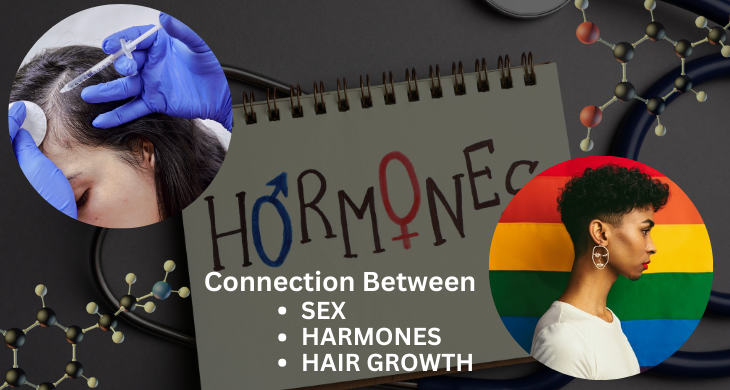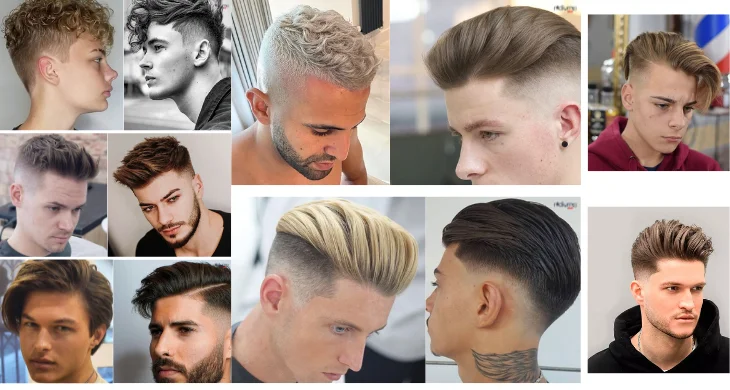Introduction:
Hair growth and its patterns are often influenced by hormonal factors. In the case of transgender individuals, hormone therapy plays a significant role in their transition process. This blog post explores the connection between sex ,hormones, and hair growth in transgender individuals, shedding light on the impact of hormone therapy on hair health.
Body:
- Understanding the Role of Hormones in Hair Growth:
- Brief explanation of how hormones affect hair growth in individuals assigned male at birth (AMAB) and assigned female at birth (AFAB).
- Highlighting the primary hormones involved ,such as testosterone and estrogen.
- The Impact of Hormone Therapy on Hair Growth:
- Discussing the effect of hormone replacement therapy (HRT) on hair growth in transgender individuals.
- Explaining how hormone therapy helps align an individual’s secondary sex characteristics with their gender identity.
- Describing the changes in hair density, texture, and growth patterns that can occur during hormone therapy.
- Hair Growth Expectations during Transition:
- Addressing the common concerns & expectations regarding hair growth during transition.
- Explaining the timeline for noticeable changes in hair growth & potential variations among individuals.
- Emphasizing the importance of patience and understanding that results may vary.
Hair growth and hormones are interconnected in complex ways, and this relationship becomes particularly intriguing when exploring its impact on transgender individuals. In this blog post, we delve into the influence of hormones on hair growth for transgender people and shed light on the scientific mechanisms behind it.
Understanding Hormones and Hair Growth:
Hormones play a crucial role in the growth and development of human hair follicles. Testosterone and estrogen, the primary sex hormones, have significant effects on hair growth patterns in cisgender individuals. However, when transgender individuals undergo hormone replacement therapy (HRT) to align their bodies with their gender identity, it introduces unique dynamics.
The Effects of Testosterone:
For transgender men, testosterone therapy can promote hair growth in previously less hairy areas, such as the face, chest, and abdomen. The increased levels of testosterone stimulate the growth of terminal hair, leading to the development of masculine secondary sexual characteristics.
However, when transgender individuals undergo hormone replacement therapy (HRT) to align their bodies with their gender identity, it introduces unique dynamics.
The Impact of Estrogen:
On the other hand, transgender women who undergo estrogen therapy may experience a decrease in body and facial hair growth. Estrogen can shift the hair cycle ,leading to reduced hair density and finer ,vellus-like hair. This effect is particularly pronounced in areas such as the face, arms, and legs.
The Role of Anti-Androgens:
In some cases ,transgender women may also take anti-androgen medications to suppress testosterone levels. These medications can further contribute to a reduction in hair growth ,aiding the overall feminization process.
Conclusion:
Understanding the intricate relationship between hormones and hair growth is vital for transgender individuals embarking on their gender-affirming journey. Hormone replacement therapy can bring about significant changes in hair patterns, aligning them with their gender identity. By recognizing and appreciating these transformations, we can support and empower transgender individuals throughout their transition process.
Remember, each person’s journey is unique, and consulting with healthcare professionals experienced in transgender healthcare is crucial to ensure personalized guidance and care.
Through education and empathy, we can foster a more inclusive and understanding society, where everyone can feel comfortable and confident in their own skin.

Q1: Can hormone therapy alone promote significant hair growth in transgender individuals?
A1: While hormone therapy can influence hair growth ,the extent of growth varies among individuals. It may be necessary to explore other hair growth treatments alongside hormone therapy.
Q2: Can transgender women regain a full head of hair through hormone therapy?
A2: Hormone therapy alone may not reverse significant hair loss in transgender women. Other hair restoration methods, such as medication or transplantation ,could be considered for optimal results.
Q3: Does hormone therapy affect facial hair growth in transgender women?
A3: Hormone therapy can reduce facial hair growth over time in transgender women ,but it may not completely eliminate it. Additional hair removal methods like electrolysis or laser treatment may be necessary.
Q4: Will hormone therapy lead to hair loss?
A4: While hormone therapy may change hair growth patterns, it is unlikely to cause significant hair loss. Factors such as genetics and individual hormonal responses can influence hair thinning, but it is not a direct result of hormone replacement therapy.
Q5: Can hair growth be restored through hormone therapy?
A5: Hormone therapy can have limited effects on hair regrowth, particularly in areas affected by androgenetic alopecia. However, it is essential to manage expectations, as the degree of regrowth may vary for each individual.
Q6: Are there any additional treatments to stimulate hair growth?
A6: Depending on individual circumstances, supplementary treatments like minoxidil or hair transplantation may be considered to enhance hair growth.



